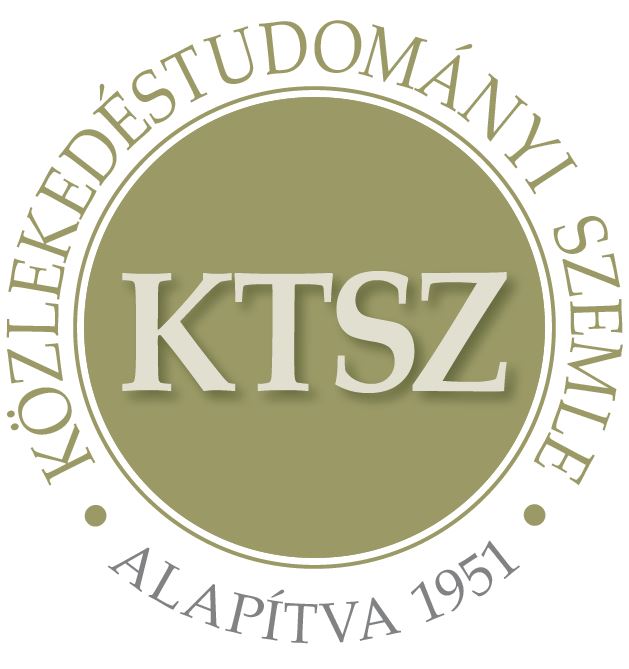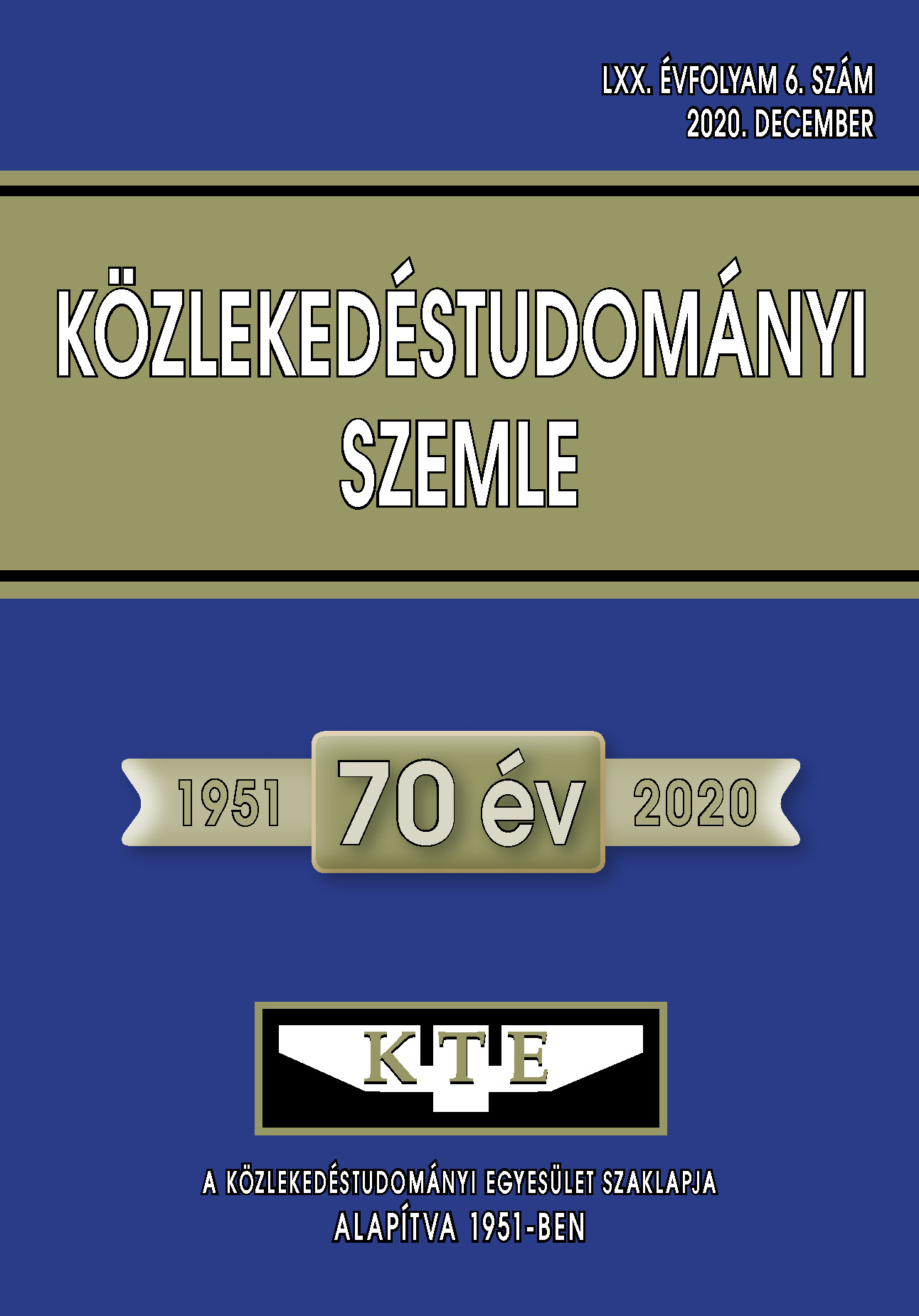Automatizált, állókép alapú forgalomszámlálás erdészeti utakon
Absztrakt
A közlekedési infrastruktúra, illetve annak használata rendkívül sokszínű és szerteágazó képet mutat mind műszaki paramétereiben, mind a használat jellegét illetően. Az erdészeti utak speciális használatának bemutatásával a szélesebb körű megismertetés lehetőségét kínáljuk fel olvasóinknak.
Hivatkozások
Arnberger, A., Eder, R., 2007. Monitoring recreational activities in urban forests using long-term video observation. For. Int. J. For. Res. 80, 1–15. DOI: http://doi.org/dxq36n
Arnberger, A., Haider, W., Brandenburg, C., 2005. Evaluating Visitor-Monitoring Techniques: A Comparison of Counting and Video Observation Data. Environ. Manage. 36, 317–327. DOI: http://doi.org/cbm3w4
Benkhard, B., Szabó, Bence., 2012. Do we need mapping of tourist flows? Lessons from Börzsöny Mountain, in: Fredman, P., Stenseke, M., Liljendahl, H., Mossing, A., Laven, D. (Eds.), Outdoor Recreation in Change – Current Knowledge and Future Challenges. Institute for Landscape Architecture and Landscape Management, Bodenkultur University, Stockholm, Sweden, pp. 374–375.
Campbell, M.J., 2006. Monitoring Trail Use with Digital Still Cameras: Strengths, Limitations and Proposed Resolutions in: Siegrist, D., Clivaz, C., Hunziker, M., Iten, S. (Eds.), Proceedings of the Third International Conference on Monitoring and Management of Visitor Flows in Recreational and Protected Areas. University of Applied Sciences Rapperswil, Rapperswil, Svájc, pp. 317–321.
Cessford, G., Muhar, A., 2003. Monitoring options for visitor numbers in national parks and natural areas. J. Nat. Conserv. 11, 240–250. DOI: http://doi.org/fj2vth
Clawson, M., 1958. Statistics on outdoor recreation. Resources for the future Inc., Washington, USA.
Duke, D., Quinn, M., 2008. Methodological considerations for using remote cameras to monitor the ecological effects of trails users: lessons from research in Western Canada, in: Raschi, A., Trampetti, S. (Eds.), Management for Protection and Sustainable Developement - Proceedings of the Fourth International Conference on Monitoring and Management of Visitor Flows in Recreational and Protected Areas. National Research Council, Institute for Biometeorology, Montecatini Terme, Olaszország.
He, K., Zhang, X., Ren, S., Sun, J., 2015. Deep Residual Learning for Image Recognition. ArXiv151203385 Cs.
Héjj, B., 1987. Az erdei kirándulóforgalom mérése elektronika felhasználásával. Az Erdő 36 (122)., 513-514.
Héjj, B., 1986. Kik látogatják a soproni erdőket? Soproni Szle. 15., 69-78.
James, G.A., Ripley, T.H., 1963. Instructions for Using Traffic Counters to Estimate Recreation Visits and Use (resreport No. SE-3.). U.S. Department of Agriculture, Forest Service, Southeastern Forest Experiment Station, Asheville, NC, USA.
Janowsky, D. v, Becker, G., 2003. Characteristics and needs of different user groups in the urban forest of Stuttgart. J. Nat. Conserv. 11, 251–259. DOI: http://doi.org/c6m238
Keresztesi, B., 1969. FAO-EGB értekezlet az erdők közjóléti szerepének értékeléséről. Az Erdő, 18. (104.) kötet, 7. szám, 298-302. o.
Krizhevsky, A., Sutskever, I., Hinton, G., 2012. ImageNet Classification with Deep Convolutional Neural Networks. Neural Inf. Process. Syst. 25. DOI: http://doi.org/gbhhxs
Miller, A.B., Leung, Y.-F., Kays, R., 2017. Coupling visitor and wildlife monitoring in protected areas using camera traps. J. Outdoor Recreat. Tour. 17, 44–53. DOI: http://doi.org/ggn939
Nagy, G.M., 2015. Soproni erdei közösségi terek vonzerőleltára, in: Bidló, A., Facskó, F. (Eds.), Nyugat-Magyarországi Egyetem Erdőmérnöki Kar, V. Kari Tudományos Konferencia Absztraktkötete. Nyugat-Magyarországi Egyetem Kiadó, Sopron, p. 42.
Nagy, G.M., Héjj, B., 2012. A soproni “városi” erdők terhelésvizsgálatai, in: Fazekas, I., Szabó, V. (Eds.), A Környezettudatos Települések Felé: III.Települési Környezet Konferencia. Meridián Alapítvány, Debrecen, p. 287.
Nagy, G.M., László, R., 2014. A Hidegvíz-völgy turisztikai terhelés vizsgálata, in: Bidló, A., Horváth, A., Szűcs, P. (Eds.), Nyugat-Magyarországi Egyetem, Erdőmérnöki Kar, IV. Kari Tudományos Konferencia. NymE Erdőmérnöki Kar, Sopron, p. 407.
Pápa, M., 1967. Közös úton - Erdészet és turisztika. Az Erdő 16 (102), 206–209.
Redmon, J., Divvala, S., Girshick, R., Farhadi, A., 2015. You Only Look Once: Unified, Real-Time Object Detection. CoRR abs/1506.02640.
Redmon, J., Farhadi, A., 2016. YOLO9000: Better, Faster, Stronger. CoRR.
Russakovsky, O., Deng, J., Su, H., Krause, J., Satheesh, S., Ma, S., Huang, Z., Karpathy, A., Khosla, A., Bernstein, M., Berg, A.C., Fei-Fei, L., 2015. ImageNet Large Scale Visual Recognition Challenge. Int. J. Comput. Vis. IJCV 115, 211252. DOI: http://doi.org/gcgk7w
Szegedy, C., Wei Liu, Yangqing Jia, Sermanet, P., Reed, S., Anguelov, D., Erhan, D., Vanhoucke, V., Rabinovich,
A., 2015. Going deeper with convolutions, in: 2015 IEEE Conference on Computer Vision and Pattern Recognition (CVPR). Presented at the 2015 IEEE Conference on Computer Vision and Pattern Recognition (CVPR), pp. 1–9. DOI: http://doi.org/gftjd8
Tóth, S., 1974. Erdészeti közvéleménykutatás az erdők üdülési funkciójának vizsgálata céljából. Az Erdő 23 (109), 385–391.
Walterné, C.E., 187. Erdei üdülési igények és szokások a Pilisben és a Budai-hegységben. Az Erdő 36 (122), 325–327.
Yuan, S., Maiorano, B., Yuan, M., 1995. Techniques and Equipment for Gathering Visitor Use Data on Recreation Sites. United States Department of Agriculture, Forestry Service.
Az elektronikusan megjelenő cikkek nyílt hozzáféréssel rendelkeznek (OJS), online ingyenesen elérhetők és letölthetők. A cikkek szerzőit nem terheli megjelentetési vagy kiadási költség (APC). Felhasználóknak joguk van a cikkek olvasására, letöltésére, másolására, kinyomtatására, valamint azokban való keresésre, vagy a teljes szöveg linkkel történő megosztására.
A szerzőknek nyilatkozniuk kell arról, hogy beadványukat korábban nem tették közzé más folyóiratban, a pénzügyi támogatás feltüntetésre került és a hivatkozások listája teljes és pontos, beleértve az URL-ek és a DOI-k specifikációját is (ha rendelkezésre állnak). A cikktervezet beadásakor minden szerző jóváhagyja a benyújtott változatot. A szerzők garantálják, hogy a cikk az ő eredeti művük. A szerzők kötelesek részt venni a szakértői értékelés folyamatában, követni a bírálók tanácsait, betartani az előírt határidőket, és amennyiben előfordulnak, kötelesek visszavonni a benyújtást vagy kijavítani a hibákat.
Minden beadott cikket szakértői értékelés alá kerül, ahol a szerkesztők független értékelést kérnek legalább egy szakértőtől, ügyelve arra, hogy a bíráló(k)nak ne legyen összeférhetetlensége a szerzőkkel. A végső döntést a főszerkesztő hozza meg, aki figyelembe veszi az értékeléseket és a szerkesztők javaslatait. A szerkesztők és a lektorok bizalmasan kezelik a beadványt.
A kiadó és a szerkesztők elkötelezettek a magas etikai normák betartása mellett, és megakadályozzák azokat a publikációkat, amelyekben kutatási visszaélés történt. Az ilyen etikai kérdésekben a COPE irányelveit követik.
A szerzők fenntartják a szerzői jogokat, és megadják a folyóiratnak az első közzétételi jogot a Creative Commons Licenc alapján (https://creativecommons.org/licenses/by-nc-nd/4.0), amely lehetővé teszi mások számára, hogy megosszák a művet, elismerve a mű szerzőségét és a folyóiratban való első közzétételt.
A folyóirat archiválja az összes megjelent cikket, és a folyóirat tulajdonosa, a Közlekedéstudományi Egyesület továbbra is üzemelteti az adatbázist abban az esetben is, ha a folyóirat kiadása megszűnik.















